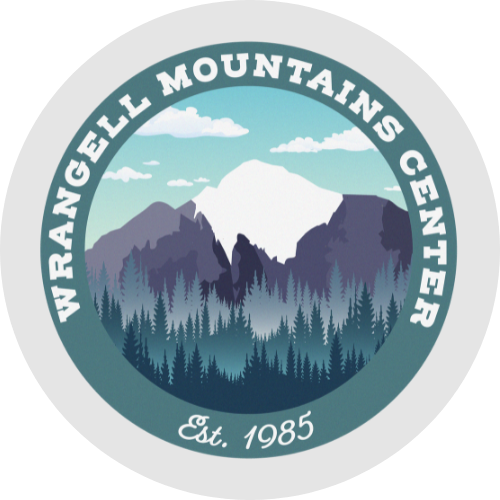During the months of September and October, the Wrangell Mountains Center is hosting a series of blog posts about raptors in partnership with the NEA and Copper River Valley’s Big Read. This year’s Big Read book is the Maltese Falcon by Dashiell Hammett. In the first two posts of this series we explored a bit about what types of raptors are found in the region and looked a little bit closer at falcons in particular. This week I talked with Nancy Wade at the Alaska Wildbird Rehabilitation Center (AWBRC) to learn more about what it is like to work with raptors.
AWBRC is a nonprofit whose mission is to care for injured, orphaned and sick wild birds with the goal of returning them to the wild; and to educate the public about these birds and their habitats. They do this by rescuing birds in need, as well as providing educational programs with live, non-releasable raptors. They visit numerous schools, tourist venues, public events and private parties, including Earth Discovery Day hosted by WISE and a number of partner organizations each spring in Copper Center.
Nancy has been working with AWBRC for the past 10 years and started out by volunteering one shift a week caring for the birds. From there she learned how to become an education bird presenter and is now the educational curator. Nancy says that “it is very interesting, fun, and satisfying being around these wild birds. They are still wild, despite their comfort around humans. They are amazing”.
I asked her more about what the rehabilitation process is like. Nancy says it varies widely from simply allowing a stunned bird to regain its composure to surgery for broken bones. AWBRC has a veterinarian who volunteers to perform surgeries, set bones, and supervise injured bird care. Most of the injuries are somehow human caused, including car hits, window hits, and cat or dog bites.
Currently the AWBRC has nine raptor education ambassador birds (birds that are not fit to be released into the wild and are used for educational programs). One recent arrival is a Northern Saw-whet Owl. The saw-whet is the smallest owl in this area of the state, and she is an incredibly cute and energetic addition to the team. She was rescued as a chick with a bad eye infection. During her care it was found she also has respiratory difficulties. Because of this, the vets determined that she could not be released and survive in the wild, as she would have trouble flying well enough to hunt.
She lives in an 8' x 8' mew, or cage, built of wood with partially open slatted walls. This gives her enough room to fly and exercise, and get sunlight and fresh air. Several times a week her handling gear (jesses and a leash) is put on her, and she is taken out on hand to keep her comfortable with her human companions. She has been requested frequently to meet the public in education programs. Her food, as in the wild, is small, usually frozen mice and quail purchased from a reputable source.
Raptors have sharp beaks and talons so the educational birds have them trimmed for the safety of the handlers and birds. Nancy says that watching the birds eat makes her realize that raptors are supremely designed for their place in nature as hunters.
If you find an injured wild bird, the first thing to is to get them out of the way of further harm, as long as it is safe to do so. Then call a bird rehabilitation center, so they can direct you to the next steps. A small bird can be placed in a box away from pets and kids. Then call a bird rehabilitation center. We can direct on the next steps. Baby birds can sometimes be returned to the nest, and a bird that gently hits a window may just need an hour or so in a safe place to get over the bump.
You can learn more about AWBRC on their website. Thank you so much to Nancy Wade for sharing her experience working with wild raptors.




